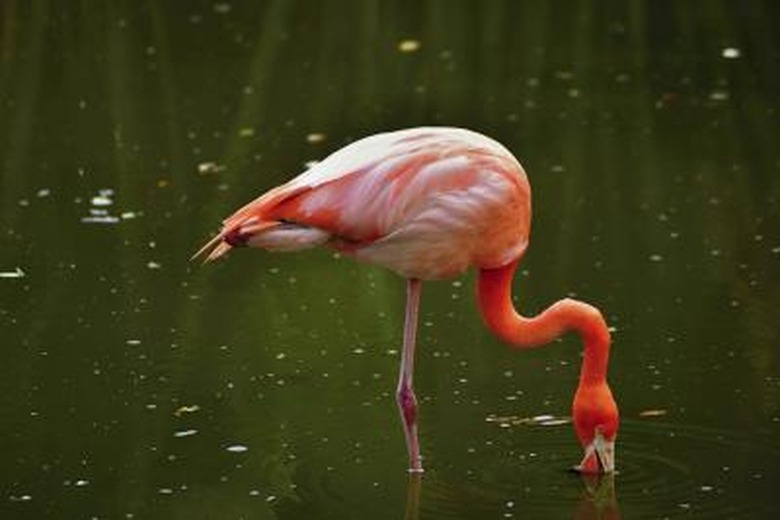What Is The Food Web In A Terrestrial & Aquatic Ecosystem?
A food web is a graphic that shows how energy is transferred between organisms in an ecosystem, whether it is aquatic or terrestrial. It is not the same thing as a food chain, which follows a linear energy path, such as the sun gives energy to the grass, the grass is eaten by a grasshopper, the grasshopper is eaten by a frog, and the frog is eaten by a hawk. A food web, however, acknowledges the complexity of food and energy chains, showing how all members of a food chain are connected by multiple paths.
Food Web Basics
Food Web Basics
Producers are plants and other organisms that carry out photosynthesis, using the sun as food energy. Consumers include plant-eating herbivores, meat-eating carnivores, and organisms that eat both, called omnivores. Finally there are decomposers, such as bacteria and fungi, which eat nonliving organic material.
Control
Control
A "down control" food web is regulated mainly by predators. For example wolves preying on moose regulates the numbers of moose, and therefore the productivity of plant food favored by moose, such as willows. "Up control" is a web regulated mainly by the primary production rates. For example, the amounts of algae in an aquatic ecosystem affects the number of herbivorous fish in that area.
Aquatic
Aquatic
Aquatic ecosystems are made up of both freshwater and saltwater. In freshwater there are shredders like the stonefly, who feed on organic matter. Phytoplankton are a main producer in the aquatic web. Some phytoplankton and terrestrial organic matter fall to the bottom of an aquatic ecosystem where they are eaten by bottom grazers. Other phytoplankton is eaten by zooplankton. The primary consumers of zooplankton are small fish and whales. Secondary consumers are larger fish who eat the smaller fish, which can then also be eaten by larger fish or tertiary consumers.
Terrestrial
Terrestrial
Producers include grasses, berries and flowers, and seeds. These producers are eaten by insects such as butterflies, as well as birds, chipmunks and deer, as well as by omnivores such as bears. Birds also eat the insects and small mammals, and bears eat the small mammals that consume the producers as well. When these animals die, they are decomposed by fungi and insects, and then used as fertilizer for the producers.
Crossover
Crossover
Terrestrial and aquatic food webs are also intertwined, providing nutrients to the other's organisms. A change in the size of one population affects subsequent populations, in both habitats. Aquatic consumers are also eaten by terrestrial animals such as bears, raccoons, birds and humans. Aquatic animals such as killer whales hunt semi-terrestrial animals such as seals. Terrestrial debris enters aquatic ecosystems, falling to the bottom of the water where it is consumed by bottom grazers.
Cite This Article
MLA
Witenberg, Misty. "What Is The Food Web In A Terrestrial & Aquatic Ecosystem?" sciencing.com, https://www.sciencing.com/food-terrestrial-aquatic-ecosystem-6551428/. 22 November 2019.
APA
Witenberg, Misty. (2019, November 22). What Is The Food Web In A Terrestrial & Aquatic Ecosystem?. sciencing.com. Retrieved from https://www.sciencing.com/food-terrestrial-aquatic-ecosystem-6551428/
Chicago
Witenberg, Misty. What Is The Food Web In A Terrestrial & Aquatic Ecosystem? last modified March 24, 2022. https://www.sciencing.com/food-terrestrial-aquatic-ecosystem-6551428/
